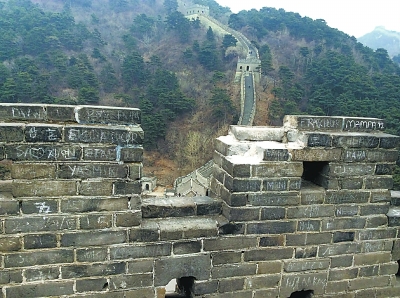 |
|
A wall at Mutianyu Great Wall in Beijing has many scrawls in foreign languages. [File photo]
|
Foreigners also like "scrawling"
Foreigners are also fond of scrawls too. The famous murals in the Spanish Altamira Cave, well recognized as a representative of primitive paintings in world art history are actually another example of "scrawls" by ancient humans.
The ancient Pompeii city, which disappeared as a result of a volcanic eruption, had more than 6,000 scrawls with all kinds of words. Here is just a selection of the scrawls that were found on the walls of the ancient city: "Hi, Jess, let your pustule get worse, may you suffer more pain." "I wish people who treated me to lunch will have good health", "Go to hell".
These scrawls, with no artistry at all, are exactly the same as the "uncivilized behavior" we criticize nowadays, but they are now valuable as they give archeologists insight into the lives of ancient people.
In 2014, there was a photo showing that a wall at Mutianyu Great Wall in Beijing was full of scrawls in English or other foreign languages, including written words from Sweden, Costa Rica, Brazil and others.
So perhaps the tendency to "scrawl" is innate in all human beings, and we should be more understanding of the impulse, even though we should rein it in and respect ancient relics so as to preserve their original beauty.

